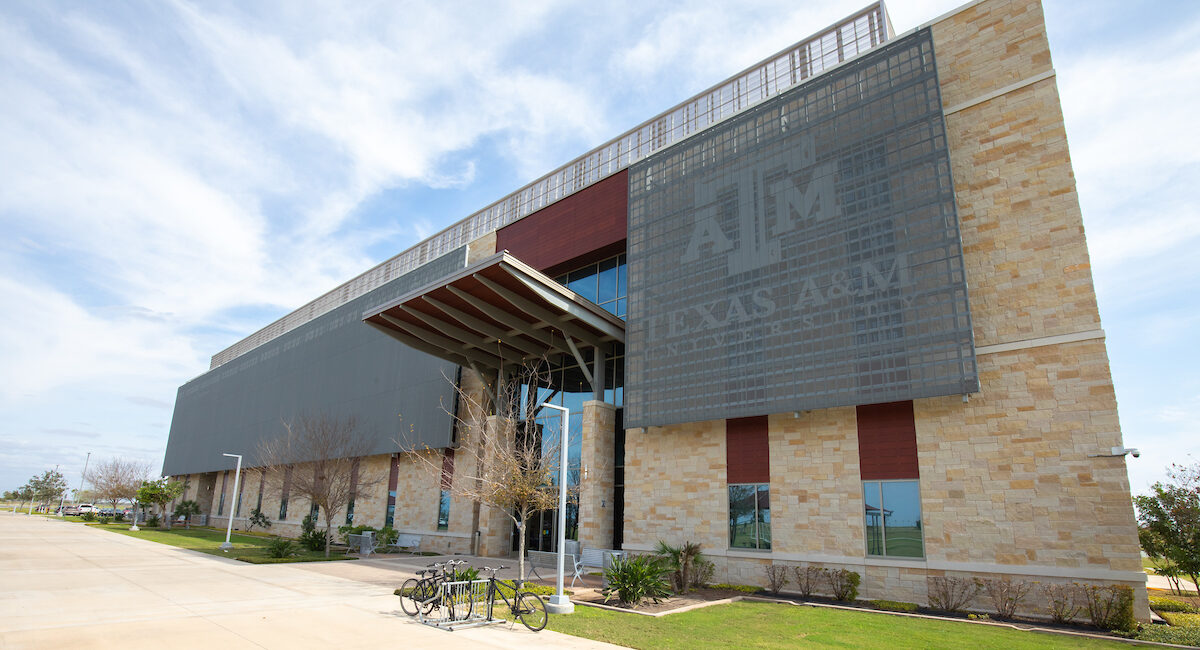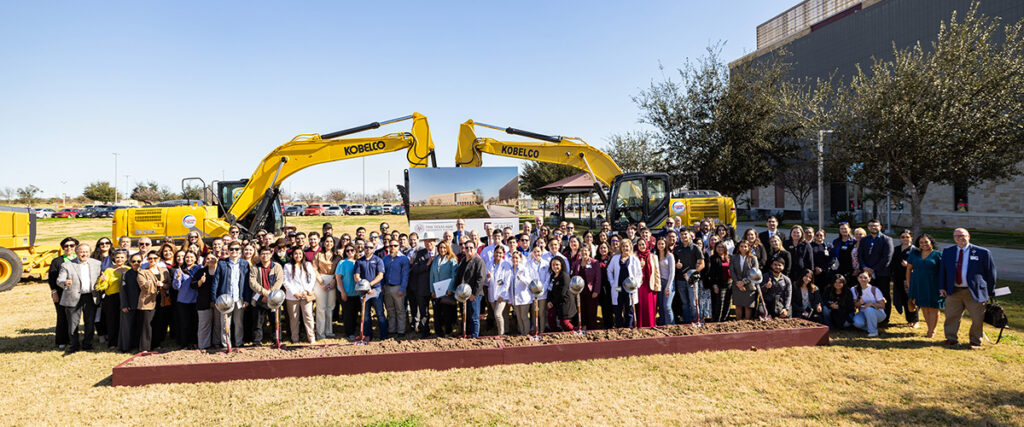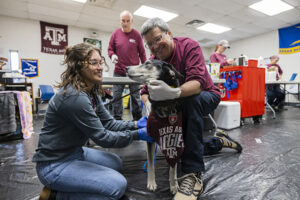
VMBS at McAllen
Aggie Excellence in the Rio Grande Valley
Since the Texas A&M University Higher Education Center at McAllen opened in 2018, the Texas A&M College of Veterinary Medicine & Biomedical Sciences (VMBS) has played an important part in the center’s success. The VMBS’ role in McAllen began with expanding the biomedical sciences (BIMS) undergraduate degree program to the region to prepare the next generation of medical and veterinary professionals for successful careers. As the McAllen campus expands, the VMBS’ support of Aggie excellence in the region also grows.
Breaking New Ground
When the new Health Nursing Education & Research Building officially opens in 2026, the VMBS will use its dedicated, 5,000-square-foot space for One Health programming, including a veterinary telehealth service, a research laboratory, and a home base from which the region’s animal health needs can be addressed.
This center for VMBS One Health will empower the college to better serve Texans in the Rio Grande Valley and beyond by enhancing seven areas:
- transboundary diseases research
- large animal biosecurity efforts
- zoonotic disease research
- student recruitment
- veterinary public health research
- dual-language programs in public health outreach and education
- telemedicine

Groundbreaking Research

The new One Health space will support VMBS research teams that are exploring some of the greatest health concerns affecting the Rio Grande Valley and as a hub for:
- Faculty who are working to keep animals and Texans healthy statewide through research in transboundary diseases, including infectious diseases carried across the U.S.-Mexico border by ticks, mosquitoes, and other insects;
- Researchers who are working to ensure the health of livestock — through monitoring for potential exotic diseases, developing surveillance programs, and informing producers of potential biosafety concerns — which also ensures the safety of the food supply;
- Studies that are examining both preexisting and newly emerging zoonotic diseases in the area. Like many rural areas of the state, the Rio Grande Valley suffers from a veterinary shortage, which makes it a hotbed for the infections that are transmissible between animals and humans; and
- Teams to work more efficiently by processing and analyzing samples on-site.
Training Future Health Leaders
The largest degree program in McAllen, BIMS strives to enhance Texas A&M’s academic excellence in South Texas for students who are interested in remaining in the area while pursuing their bachelor’s degree. As a result, the VMBS recruits highly qualified McAllen BIMS students to our graduate and Doctor of Veterinary Medicine (DVM) programs.
The new One Health center will offer additional opportunities for BIMS students in McAllen to engage in research, which will introduce undergraduates to new career opportunities that they may not otherwise consider.
In addition, the space will allow the VMBS to create dual-language programs that will empower students to reach as many people as possible while serving in public health roles, thus ensuring that more people in the community have easy access to important health information.
STUDENTS
enrolled in the
BIMS program
at McAllen, making it the largest UG major offered at the Higher Education Center
TREATED
over 4 years
by VET at OBHP
SERVICES
provided in 2024
by VET at OBHP
Selfless Service

The One Health center will allow the VMBS to offer additional outreach and service efforts in South Texas by expanding our veterinary telehealth offerings, creating opportunities to collaborate with experts in other fields, and providing additional resources for serving and educating the public. Examples of these opportunities include:
- Telehealth – By creating a high-tech exam room equipped with the appropriate technology, specialists in College Station can examine patients in South Texas and provide medical consultations, relieving the need for residents to have to drive hours to receive such specialty care.
- Interdisciplinary Collaboration – By partnering with experts in disciplines such as biomedical engineering to develop new sensor technologies, instruments, and tools, VMBS faculty also can expand telehealth capabilities in veterinary medicine.
- Public Education – By educating the public about both pet health and the role our pets play in public health, VMBS faculty and students can increase awareness of important topics such as spaying and neutering pets and how vaccinations against zoonotic diseases help keep both the animal and human populations healthier.
- Service – By having a place VMBS faculty, staff, and students can call “home” during activities such as the State of Texas’ annual Operation Border Health Preparedness (OBHP) readiness exercise and outreach event, groups like the Texas A&M Veterinary Emergency Team can continue to in their commitment to serving South Texas as they provide veterinary care to animals in underserved areas.
